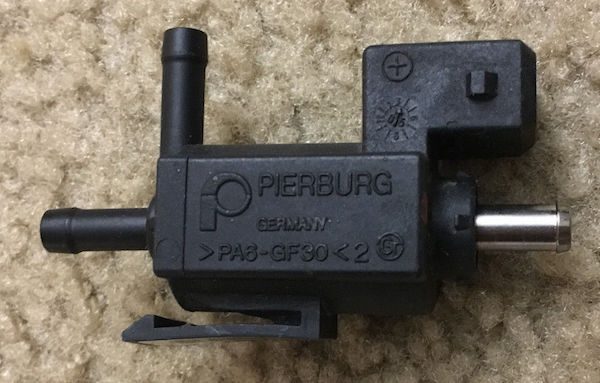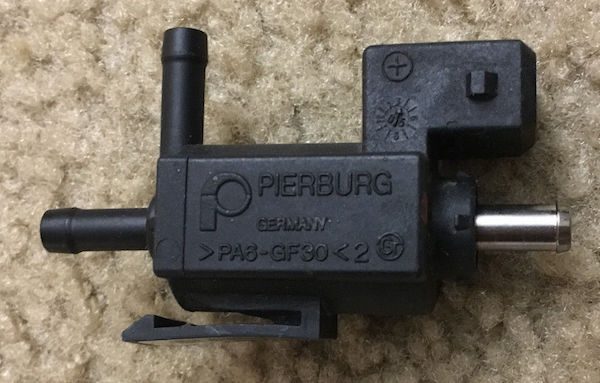
P0046 Turbo / Supercharger Boost Control A Circuit Range Performance
Content
OBD-II Trouble Code - P0046 - Data Sheet
P0046 - Turbocharger/Supercharger Boost Control Circuit Performance Range "A"
What does trouble code P0046 mean?
This Diagnostic Trouble Code (DTC) is a generic transmission code, which means it applies to OBD-II equipped vehicles that have a supercharger or turbocharger (Ford Powerstroke, Chevrolet GMC Duramax, Toyota, Dodge, Jeep, Chrysler, VW, etc.) . D.). Although general, specific repair steps may differ depending on the brand / model.
Turbochargers and superchargers are air pumps that force air into an engine to increase power. The superchargers are driven from the engine crankshaft by a belt, while the turbochargers are driven by the engine exhaust gases.
Many modern turbocharged vehicles use a so-called variable geometry turbocharger (VGT). This type of turbocharger has adjustable blades around the outside of the turbine that can be opened and closed to change the amount of boost pressure. This allows the turbo to be controlled independently of the engine speed. The vanes usually open when the engine is under light load and open when the load increases. The blade position is controlled by the powertrain control module (PCM), usually via an electronic control solenoid or motor. The position of the turbocharger is determined using a special position sensor.
On vehicles that use a traditional fixed displacement turbocharger or supercharger, boost is controlled through a wastegate or wastegate. This valve opens to release the boost pressure. The PCM monitors this system with a boost pressure sensor.
For this DTC, "A" indicates a problem in a portion of the system circuit and not a specific symptom or component.
Code P0046 is set when the PCM detects a performance issue with the boost control solenoid, whether the engine is using VGT turbocharging or a traditional turbocharger / supercharger.
One type of turbocharger boost control solenoid valve: 
Associated Turbo / Supercharger Engine DTCs:
- P0045 Turbocharger / Supercharger Boost Control «A» Circuit / Open
- P0047 Turbocharger / Supercharger Boost Control «A» Circuit Low
- P0048 Turbocharger / Supercharger Boost Control «A» Circuit High
- P0049 Turbocharger / Supercharger Turbine Overspeed
- P004A Turbocharger / Supercharger Boost Control "A" Unstable / unstable circuit
Code severity and symptoms
The severity of these codes is moderate to severe. In some cases, turbocharger/supercharger problems can cause severe engine damage. It is recommended to fix this code as soon as possible.
Symptoms of a P0046 code may include:
- Insufficient boost resulting in reduced engine performance
- Excessive acceleration resulting in detonation and possible engine damage
- Check Engine Light
- Low or no boost and loss of power during acceleration (most common)
- The motor gain is zero and the motor has no gain
- The engine will run normally; only acceleration affects
Causes of the P0046 code
Possible reasons for setting this code:
- Faulty boost pressure / turbocharger position sensor
- Defective turbocharger / supercharger
- Defective control solenoid
- Wiring problems
- Defective PCM
- Vacuum leaks if the valve is controlled by vacuum
- Vacuum leaks in the intake manifold
- Dirty, restrictive air filter
- The damper is either open or closed
- Clogged or leaking intercooler
- Bad connections or bad gasket between exhaust manifold and turbocharger.
- Loose connection between turbocharger and intake pipe
- Bad boost sensor
- Short circuit or open circuit in the boost sensor circuit
- Loose, corroded, or disconnected electrical connectors in the 5V reference circuit of the boost pressure sensor
- Turbocharger failure due to internal oil leaks and oil supply problems leading to bearing failure and blade damage.
Diagnostic and repair procedures
Begin by visually inspecting the turbocharger and turbocharger control system. Look for loose connections, damaged wiring, vacuum leaks, etc. Then check the Technical Service Bulletins (TSB) regarding the problem. If nothing is found, you will need to proceed to the step-by-step system diagnostics.
The following is a generalized procedure as the testing of this code differs from vehicle to vehicle. To accurately test the system, you need to refer to the manufacturer's diagnostic flowchart.
Verify system operation by commanding the control solenoid to reposition with a bidirectional scan tool. Raise the engine speed to approximately 1,200 rpm and toggle the solenoid on and off. This should change the engine RPM and the scan tool PID sensor position should also change. If the speed fluctuates, but the PID position / pressure controller does not change, suspect a problem in the sensor or its circuit. If the RPM does not change, suspect the problem is with the control solenoid, turbocharger / supercharger, or wiring.
- To test the circuit: check for power and ground at the solenoid. Note: When performing these tests, the solenoid must be commanded ON with a scan tool. If there is no power or ground connection, you will need to trace the factory wiring diagram to determine the cause.
- Check the turbocharger / supercharger: remove the air intake to check the turbocharger / supercharger for damage or debris. If damage is found, replace the unit.
- Check the position / pressure sensor and circuit: in most cases three wires should be connected to the position sensor: power, ground and signal. Make sure all three are present.
- Test the control solenoid: In some cases, you can test the solenoid by checking its internal resistance with an ohmmeter. See Factory Repair Information for details. You can also connect the solenoid to power and ground to test if it works.
COMMON ERRORS WHEN DIAGNOSING CODE P0046
- Components should not be considered defective and should not be replaced without first thoroughly inspecting the system.
- Some mechanics have reported that failure to clear the turbocharger lubrication system of all debris and obstructions can lead to repeated turbo failures.
- Replacing the turbocharger without fully checking the function of the wastegate or bypass valve and the electrical circuits is also the cause of frequent misdiagnosis.
HOW SERIOUS CODE P0046 IS?
- This code is very serious. Typically, the check engine light comes on and needs to be diagnosed as soon as possible to prevent engine damage. Minimize driving until the problem is corrected.
- The vehicle may run rough, backfire, have rich or lean fuel economy, and operate under lift conditions or under lift conditions.
- If the check engine light comes on immediately after turning it on, the OBD-II system can often be reset and the vehicle will operate normally.
WHAT REPAIRS CAN FIX CODE P0046?
This code indicates that the operating range and performance are not being met, but it has many possible causes for a common problem. Therefore, before repairing or replacing any components, or assuming that the problem is solely due to a vacuum or oil leak, or poor wiring or connections, a mechanic must perform many tests to find the true cause and repair path.
If the vehicle has been erratic and the boost sensor is working according to driving conditions, the mechanic should check for obvious leaks in the intake system after the turbocharger, such as B. Hoses, clamps, intercooler and pipes, carefully inspect only in a seated position or at idle. The problem may not be obvious, as is usually the case when the engine is under load.
I saw a broken hose going to a throttle body that cracked on the ground and I couldn't see or feel it; the crack opened and closed depending on the load. As boost pressure increased, the crack opened like a balloon valve and relieved pressure, but it usually operated at light loads. This problem can be subtle, but it takes persistence to find it.
ADDITIONAL COMMENTS REGARDING CODE P0046 CONSIDERATIONS.
Many vehicles over 100 km have transient sensor problems, which usually occur when pulling away or during prolonged stress on the transmission. If the check engine light comes on and the vehicle is running normally, the scanner can be used to reset the OBD-II system and the problem may not reoccur. For this reason, it is important to check the error and reset it before any repair.
Need more help with your p0046 code?
If you still need help with DTC P0046, post a question in the comments below this article.
NOTE. This information is provided for informational purposes only. It is not intended to be used as a repair recommendation and we are not responsible for any action you take on any vehicle. All information on this site is protected by copyright.

One comment
Danny
Hello I have a Toyota Hilux 3,0 2012
Vehicle went into limp mode and set P0046
Have with the tester de
N Turbo can adjust the linkage. On the second and third try I was able to control it but the solenoid valve did not hum. Turbocharger whistles loudly. I can't find the turbo driver control unit. It's not where it should be. Can you help me.
Thank you very much